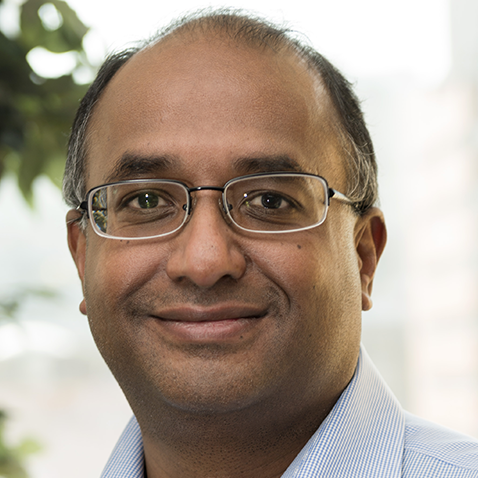
Jayaraj Rajagopal, M.D.
|
Investigator, Full Prof (M) Pulmonary - Physicians, Mass General Research Institute |
|
Professor of Medicine Harvard Medical School |
|
Kevin and Polly Maroni MGH Research Scholar 2014-2019 Mass General Research Institute, Massachusetts General Hospital |
|
Associate Member Broad Institute |
|
HHMI Faculty Scholar Howard Hughes Medical Institute |
|
Principal Faculty Harvard Stem Cell Institute |
Research Interests
Research Narrative
The lung is a vertebrate invention that allowed the early tetrapods to leave the water and colonize the land. Oxygen is the essential actor in aerobic metabolism and the lung’s cardinal function is to mediate the efficient transfer of oxygen from the atmosphere to the circulatory system.
Given the lung’s essential function, diseases of the lung are often life-threatening or incapacitating. Our interest in regeneration is focused on an attempt to understand how cells in a tissue act in concert, as an ensemble, to respond to injury and restore normal tissue form and function.
Recently, we’ve been interested in topics like plasticity, intercellular signaling circuits operant between different subpopulation of epithelial cells, injury sensing, how tissue form and physiologic function are related, and cellular heterogeneity. But we are open to any and all new avenues that give us insight into how cells act, not as individuals, but as components of a broader cellular tapestry, within the lung, with immune cells, and across organ domains. And we are interested in how all this relates to human lung disease.
In our lab, postdocs get to ask the questions that matter to them. A problem is that there are often too many of those. It’s easy for newcomers to find a panoply of suggestions, but we embrace new directions just as zealously.
Some current problems of interest are:
Basic Questions in Biology and Regeneration
The murine trachea and human airway are robust models of organ regeneration. We seek to answer longstanding historical questions in regeneration biology using this highly reproducible, rapid experimental model:
- Identifying the signal that initiates regeneration, as well as the signal that causes regeneration to stop (perhaps abnormally regulated in dysplastic precancerous tissues)
- Defining the mechanism that controls a regenerate’s size
- Clarifying whether dedifferentiation and "spontaneous" developmental reprogramming is involved in normal epithelial restoration
- How immune cells modulate regeneration
- Organ domains
- Injury sensing
- Restoration of function after morphogenesis is complete
- Intercellular signaling circuitry
- Organelles
- Cell heterogeneity and clonal behavior
- Metaplasia
- Lots of other “stuff” and lots of other “stuff” we haven’t yet thought about
Applied Biology and Lung Disease
- We seek to isolate and culture lung stem cells and to understand their role in normal lung epithelial homeostasis and in regeneration after tissue injury
- We’ve made iPS cells into airway epithelium. CF is our first enemy, but we have other battles planned
- Lung stem cells purified from a donor animal or obtained from embryonic stem cell culture will provide novel reagents for generating in vitro models of human lung disease
- We are also exploring the in vivo engraftment of lung epithelial stem cells as a basis for regenerative medical therapies
- Our inquiries into the mechanisms underlying embryonic lung development and adult lung epithelial regeneration serve as a framework within which we seek to understand how the reactivation and distortion of normal developmental processes results in human lung disease. This work will culminate in the identification of cells capable of carrying out regeneration, but it will also teach us how to modulate these cells for human regenerative therapies. As an example, we have already identified the Notch and Yap pathways as regulators of mucous and squamous metaplasia in the embryonic and adult tracheal epithelium. Indeed, Notch antagonists can block human mediators of allergic asthma and prevent mucous metaplasia of the airways. In these cases, we are interested in molecules that can serve as drugs
- Cancer from a developmental biologist’s point of view
- Setting up systems to do “human developmental biology”
| jrajagopal@mgh.harvard.edu |
|
Center for Regenerative Medicine Simches Building 185 Cambridge Street Boston, MA 02114-2790 |
